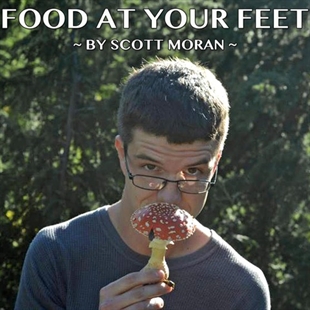
(SCOTT MORAN / iNFOnews.ca)
November 17, 2016 - 12:00 PM
OPINION
We all know vegetables are good for you. Some are healthier than others, and our wild veggies are at the top of the list when it comes to nutrient value. If the average person eats a large bowl of salad made from foraged greens such as watercress, purslane, or the many plants lovingly referred to as pigweed, their appetite will easily be sated.
How does a leafy meal with almost no calories provide a feeling of fullness? Our diet is loaded with low - nutrient calories. Our bodies crave something more, but we don't know what we want because we have never had it. Our diets are a phenomenon on the historic scale. If your dietary needs are met, you will naturally stop eating. Very few people have experienced this feeling because there are very few foods that can provide it. The solution to our modern diets cannot be found in the supermarket, or in the health food store, and definitely not in a neatly packaged pill, powder, or drink. The best option is to seek out wild foods. The second best option is to eat food grown from seeds that have the longest, and shortest, history of use. The closer you can get to the original wild format of a vegetable, the more nutrients it will contain. Every time selective breeding happens in a seed crop, nutrients are lost. Every year, our grains, fruits, and vegetables lose nutrition. You are not eating the same veggies you had as a child.
Narrow - leaved arugula (also called rocket) has been cultivated from a wild seed crop as recently as the 1970's. This makes it almost indistinguishable from its true wild counterpart. Ancient heritage varieties of all vegetables are a safe bet as well. Historically, each farm had their own variety of a certain vegetable. Ten farms, ten different varieties of one species of food. This can still happen wherever agricultural corporations don't have a dominant interest. Chili peppers are a great example. Seeds are harvested every year and stay on the family farm for generations. The unique chili is part of an identity. They can even be found wild on the rocky slopes in certain regions of Mexico.
If you are still not ready to dig up and eat dandelion greens, try radicchio or chicory. They are all very similar in flavour and benefits. Kale is a good one too and strongly resembles it's origin plant, wild cabbage, which grows wild on the cliffs of Dover in the UK, and across northern coastal Europe. For more examples your local seed - savers are a great guide to heritage vegetables.
If you decide to grow your own, you must have high quality soil, not fertilizer. Nurture and cultivate your dirt, and never pour, spray, or sprinkle purchased nutrients on to the earth that will provide you with the essentials of life. Everything should be an effort to reproduce the wild edibles in our surroundings that are perfectly adapted to suit our needs and climate. You could skip all the work and get out a knife and picking sack, read some Euell Gibbons, and get your rabbit on. I often feel like a rabbit when eating a big bowl of weeds, and that is fine with me!
— Scott Moran is a local forager discovering his own path to food freedom
We welcome your comments and opinions on our stories but play nice. We won't censor or delete comments unless they contain off-topic statements or links, unnecessary vulgarity, false facts, spam or obviously fake profiles. If you have any concerns about what you see in comments, email the editor.
News from © iNFOnews, 2016